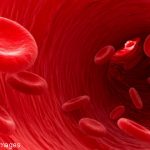Every two years, an OMERACT meeting brings together about 200 researchers to debate the latest set of measures. This year the meeting will be held in Borneo, in part as recognition that OMERACT is a global organization and needs to respect the growing influence of Asia. OMERACT venues are typically places where the attendees are “confined” to a fairly remote location so that debates about the science can continue around the dinner table and bar in the evenings. This approach is often a good way of reaching consensus, even if it does lead to a certain bleary-eyedness in the mornings. But it is not all work, and OMERACT 10 is being held adjacent to a conservation area where orangutans and other endangered species are bred in the wild.
OMERACT attendees include researchers, clinicians, epidemiologists (methodologists), clinical trialists (including representatives of the pharmaceutical industry), and, most importantly, patients. Patients have been involved with these meetings and the developments in outcome measures since OMERACT 6 in 2002. They have added significantly to the debate on these issues and have helped make OMERACT outcome measures even more relevant. Patients are involved with every OMERACT working group; we have created an OMERACT Glossary for the benefit of patients, but it is also very useful for health professionals involved in rheumatology trials. An important development has been the OMERACT Fellows program, supported in part by the ACR and EULAR, which brings young researchers to OMERACT meetings and links them to OMERACT projects over time. This close involvement in OMERACT provides them with mentorship through their development as the next wave of rheumatology clinical trialists.
Reaching consensus on what should be measured and how it should be measured remains a data-driven and iterative process. An initiative begins as a Special Interest Group (SIG) where a group of experts develops a research agenda through literature reviews and validation studies. Discussions will take place at other meetings (such as ACR and EULAR) or by email and teleconference. SIGs prioritize the research agenda, expand the group, and present at a workshop where the domains are formulated and selected using a Delphi process. After more work, a module is developed where evidence is presented that can lead to the development of consensus (voting) on final selection of the outcome measures. During the OMERACT meetings, small group sessions where participants can debate evidence and express their opinions complement plenary sessions of workshops and modules.

